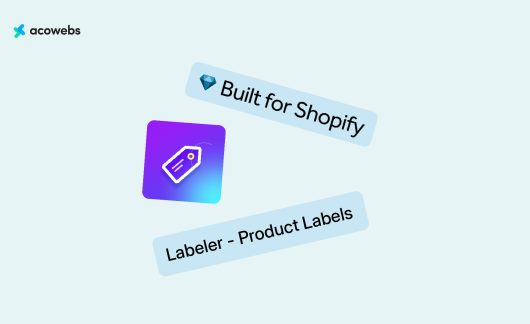A clear strategy is necessary as the online market races ahead at full speed. That’s where performance marketing comes in, acting like a guiding light for eCommerce stores navigating the complex world of online commerce.
Smart brands have already tapped into the power of performance marketing for their online shops. They choose a model where they pay for services only when they see real, tangible results.
This is especially true when they’re getting help with digital marketing or trying their hand at affiliate marketing. The heart of performance marketing lies in its ability to monitor progress and track results, making room for smart adjustments and improvements to serve the bigger goal.
Discover how to fully utilize performance marketing’s dynamic force to take your business to new heights in the cutthroat world of the internet.
Understanding Performance Marketing
Performance marketing in eCommerce merges paid advertising and brand promotion, where advertisers pay only upon the successful completion of a specific action. This action could include a customer subscribing, purchasing, or downloading an eBook.
This mutually beneficial model aligns business goals with strategic marketing efforts. Unlike traditional methods, it’s results-driven, emphasizing measurable outcomes like clicks, conversions, and revenue.
It uses analytics and data to allow for real-time campaign optimization, offering a flexible and effective way to produce noticeable outcomes in the cutthroat world of eCommerce.
It encompasses four key components: retailers or merchants, affiliates or publishers, affiliate networks and third-party tracking platforms, and affiliate managers or OPMs (outsourced program management).
Each group is imperative and works in unison to achieve the desired result. Here is a breakdown of each group:
1. Retailers or Merchants: The Architects of Performance Marketing
The retailers, merchants, and architects craft the products or services. These entities seek to expand their market reach and boost sales.
Retailers pay only for actual results through performance marketing, aligning their advertising expenditure directly with successful outcomes, whether a sale, lead or other predefined actions.
2. Affiliates or Publishers: The Dynamic Promoters
Affiliates or publishers collaborate with retailers to promote products or services through various channels, leveraging their platforms or audiences.
These partners earn commissions for driving the desired actions, incentivizing them to market the offerings strategically. The diversity among affiliates, ranging from bloggers to influencers, contributes to the versatility of performance marketing strategies.
3. Affiliate Networks and Third-Party Tracking Platforms: The Connectors
Affiliate networks and third-party tracking platforms act as connectors, facilitating smooth interactions between retailers and affiliates. These platforms provide a structured environment for managing partnerships, tracking performance, and ensuring accurate compensation.
By offering a centralized hub for monitoring campaigns and analyzing data, they enhance transparency and efficiency, fostering a collaborative and data-driven approach to performance marketing.
4. Affiliate Managers or OPMs (Outsourced Program Management): The Orchestrators
Affiliate managers or OPMs take on the role of orchestrators, overseeing the entire performance marketing program. These professionals manage relationships between retailers and affiliates, ensuring effective communication and alignment with business objectives.
OPMs are crucial in strategizing, optimizing, and fine-tuning campaigns for maximum impact. Their expertise in navigating the intricacies of performance marketing contributes to the program’s overall success.
Implementing Effective Performance Marketing Strategies
When developing performance marketing initiatives, there are a few important considerations to make:
1. Targeted Advertising Campaigns
To elevate your eCommerce store’s visibility and drive meaningful engagement, employ targeted advertising campaigns that align with your desired audience’s preferences, behaviors, and demographics.
Leverage data-driven insights to tailor ads that resonate with specific customer segments. Utilize platforms like Facebook Ads and Google Ads, invaluable tools that enable precise targeting based on users’ online activities, interests, and behaviors.
Ensure your messages reach the most likely convert audience by harnessing the power of these sophisticated advertising platforms.
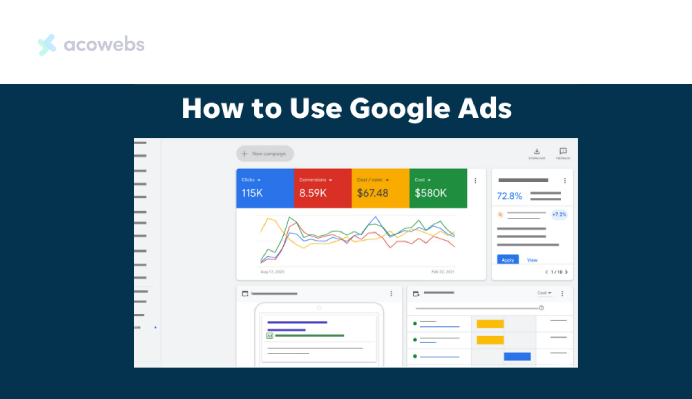
For instance, if your eCommerce store specializes in fitness apparel, you can target fitness enthusiasts aged 25-40 who frequently engage with health and wellness content.
By using these platforms strategically, you enhance your reach. Simultaneously, you optimize your marketing budget by focusing on individuals likely to become loyal customers.
2. Conversion Rate Optimization (CRO)
Conversion Rate Optimization (CRO) is the systematic process of refining your website to enhance the likelihood that visitors take a desired action, such as making a purchase or filling out a form.
This involves thoroughly analyzing user behavior, leveraging tools like A/B testing, and improving overall user experience. You can identify potential bottlenecks or obstacles in the eCommerce conversion funnel by scrutinizing how users interact with your site.
Streamlining the conversion funnel, from initial engagement to final conversion, can significantly elevate the effectiveness of your performance marketing efforts. Advantages include increased sales, improved lead generation, and a maximized return on investment (ROI).
For example, a simple adjustment in the placement of a call-to-action button, based on A/B testing results, can lead to a substantial rise in conversion rates, showcasing the impactful role of Conversion Rate Optimization in enhancing the overall performance of an eCommerce website.
3. Influencer Partnerships
Incorporating influencer partnerships into your eCommerce strategy involves collaborating with individuals with a significant following and influence in your industry or niche.
Aligning with influencers whose values resonate with your brand, you leverage their credibility and expansive reach to promote your products or services.
This strategic collaboration enhances your eCommerce store’s visibility, as the influencer’s audience will likely trust and engage with recommendations from a familiar figure.
The advantage lies in accessing a targeted and engaged audience, often resulting in increased brand awareness, customer trust, and traffic to your eCommerce site.
For example, a beauty brand collaborating with a popular makeup influencer can showcase its products through tutorials or reviews, tapping into its expertise to drive authentic and impactful engagement.
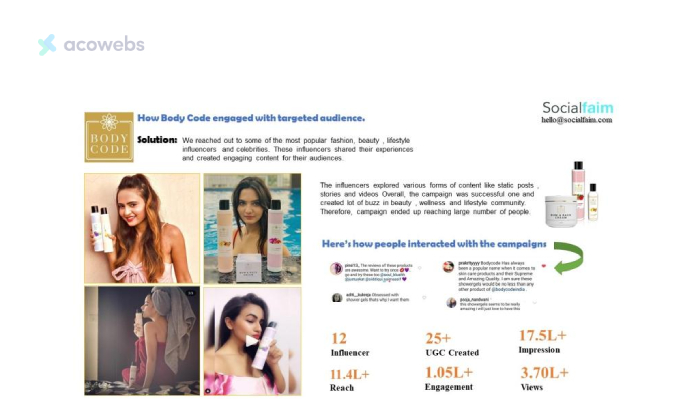
This introduces your brand to a new audience and establishes a connection with potential customers through a trusted source, making influencer partnerships a valuable component of a robust eCommerce marketing strategy.
4. Email Marketing Automation
Email marketing automation revolutionizes customer interactions by deploying automated processes across diverse customer journey stages. It personalizes communication, recommending products aligned with past purchases and utilizing targeted emails to nurture leads and drive conversions using the right marketing words to capture attention.
In 2020, the worldwide email marketing market reached a valuation of 7.5 billion U.S. dollars. Projections suggest a notable surge, anticipating the figure to rise significantly to 17.9 billion by 2027, with a projected compound annual growth rate (CAGR) of 13.3%.
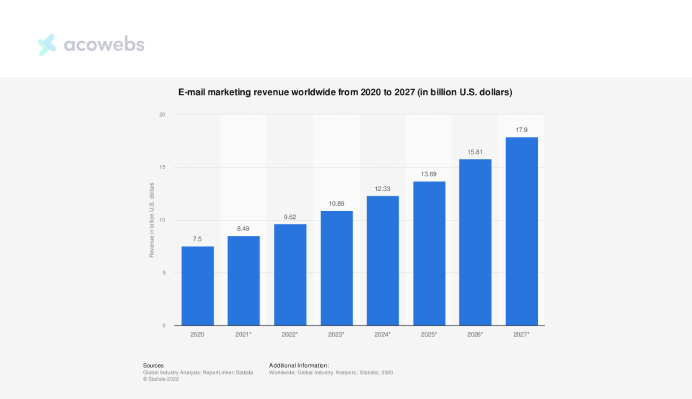
The key advantage is its ability to foster consistent engagement, build robust customer loyalty, and significantly enhance the probability of repeat business. Consider an eCommerce store implementing this strategy to orchestrate personalized email campaigns.
This allows them to offer exclusive discounts or showcase new arrivals based on individual customer preferences. The result is a seamless and tailored communication flow, enhancing the customer experience and driving conversions.
This strategic approach saves time and ensures that each customer receives relevant, timely, and personalized content.
5. Search Engine Optimization (SEO)
Search Engine Optimization (SEO) is a strategic practice focused on optimizing an eCommerce website to improve its visibility in organic search engine results.
The process involves several key elements, starting with keyword optimization, where relevant and frequently searched terms related to the eCommerce store’s products or services are strategically incorporated into the website’s content, meta tags, and headers.
Creating high-quality content is an integral aspect of SEO. An eCommerce site can establish authority and relevance in its niche by developing informative and engaging content that aligns with user intent and search engine algorithms.
This content can take various forms, including product descriptions, blog posts, and guides, providing valuable information to potential customers. With AI trending, you can use ChatGPT prompts for generating various types of content.
Ensuring the site’s search engine-friendly structure involves optimizing technical elements like site speed, mobile responsiveness, and proper URL structures.
This enhances the user experience and makes it easier for search engines to crawl and index the site. The ultimate advantage of effective SEO is improved search rankings. As an eCommerce site climbs the search engine results pages (SERPs), it attracts more organic traffic from users actively seeking products or information.
Looka, an AI-driven brand design platform, has achieved a robust backlink profile with 133,523 links from 4,456 sites, contributing to its strong SERP performance. Offering a free tool attracts links as users share without cost concerns, showcasing the impact of quality content and tools in building backlinks.
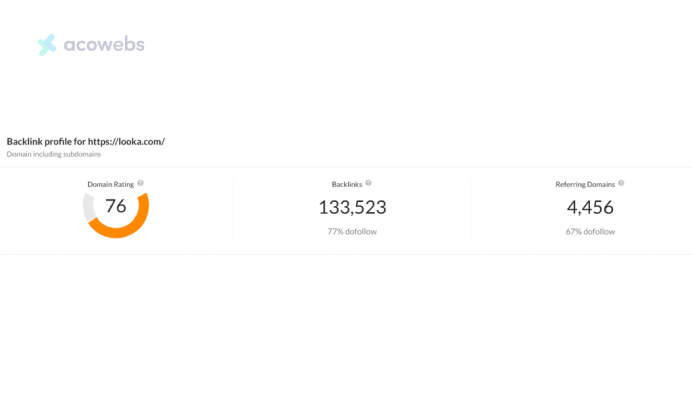
6. Affiliate Marketing Programs
Affiliate marketing programs involve establishing collaborative partnerships with external websites to promote your products. In this mutually beneficial arrangement, commissions are disbursed based on real sales or leads generated through the efforts of affiliate marketers.
This approach fosters a performance-driven collaboration, aligning incentives for both parties. The primary advantage lies in the substantial expansion of reach and the potential for increased sales, achieved without incurring upfront costs.
This method enables eCommerce businesses to leverage the marketing efforts of affiliates to tap into new audiences and markets. Consider an Affiliate Marketing Program in the realm of technology.
An eCommerce store specializing in electronic gadgets collaborates with a tech review website. The tech review website becomes an affiliate, featuring the eCommerce store’s products in their reviews and articles with a unique affiliate link.
The tech review website earns a commission for every sale from a customer who clicks through the affiliate link. This collaborative effort allows the eCommerce store to tap into the tech-proficient audience of the review website, expanding its reach within a niche market.
Simultaneously, the tech review website benefits by monetizing its content and providing its audience with direct access to the featured products. This demonstrates how Affiliate Marketing Programs can be tailored to diverse industries, providing a cost-effective means of driving sales and broadening market influence.
7. Dynamic Remarketing
Dynamic remarketing is an eCommerce store advertising strategy that targets users who have previously interacted with your website but did not complete a purchase. This approach involves deploying personalized and dynamically generated ads that showcase specific products or services the user previously viewed.
The main goal is to re-engage these users, reminding them of their initial interest and encouraging them to return to your website and finalize their purchase. The key advantage of this strategy is its ability to enhance brand recall and increase the likelihood of conversion significantly.
By tailoring ads to reflect the exact products a user has shown interest in, this strategy creates a more personalized and compelling user experience.
Consider a dynamic remarketing example in the home decor industry. An online furniture store strategically implements dynamic remarketing to target users who have previously explored its collection of sofas and coffee tables.
As these users navigate other websites or social media platforms, they are greeted with personalized ads showcasing the furniture items they have shown interest in.
This dynamic remarketing approach is a visual reminder tailored to rekindle the user’s interest in those specific home decor pieces.
The personalized ads, featuring the sofas and coffee tables previously browsed, aim to entice users to revisit the furniture store’s website, potentially resulting in a completed purchase.
This underscores the versatility and effectiveness of dynamic remarketing across diverse industries beyond electronics or fashion, reinforcing brand recall and driving conversions.
Measuring Performance Marketing Success
At the core of performance marketing lies the ability to precisely measure success through Return on Investments (ROIs), allowing every action to be tracked and evaluated against key performance indicators (KPIs) .
These metrics serve as the compass guiding marketing strategies, ensuring effectiveness and facilitating continuous improvement. They include:
1. Pay Per Sale (PPS) or Cost Per Acquisition (CPA)
PPS or CPA represents the amount a retailer or merchant pays when consumers complete a desired action, such as purchasing, clicking on an ad, or filling out a form.
This payment model is highly prevalent in ecommerce, aligning the merchant’s expenditure directly with tangible outcomes.
2. Pay Per Lead (PPL)
In the PPL model, a “lead” refers to a completed form registration or signup, typically involving customer information like name, email address, or phone number.
Merchants utilize leads for follow-ups, driving sales by connecting with potential customers who have expressed interest.
3. Pay Per Lead (PPC)
PPC entails the price a retailer pays an affiliate for each ad click referred to a designated landing page.
This model aligns with driving traffic, and the retailer pays based on the number of clicks generated.
4. Pay Per X (PPX)
PPX introduces flexibility, allowing “X” to represent various desired actions beyond leads, clicks, or sales.
Examples include downloads, upsells within apps, and sign-ups for rewards programs, tailoring payment to specific merchant-defined actions.
4.Lifetime Value (LTV)
LTV measures the predicted value a customer brings throughout their relationship with the retailer.
Leveraging predictive analytics, LTV estimates a customer’s potential spending based on their interactions and engagement with the brand over time.
Benefits of Performance Marketing?
Performance marketing offers several benefits for an eCommerce store looking to maximize its return on investment (ROI) and efficiently reach its target audience. Here are some key benefits:
1. Measurable Results
This marketing allows for precise measurement of campaign effectiveness. Metrics such as click-through rates, conversion rates, and cost per acquisition provide clear insights into the performance of each marketing channel, enabling businesses to assess the success of their campaigns and make data-driven decisions.
2. Targeted Advertising
Its strategies often leverage advanced targeting options, allowing businesses to reach specific demographics, interests, and behaviors. This targeted approach helps reach the right audience, increasing the likelihood of engagement and conversion.
3. Cost Efficiency
With performance marketing, businesses only pay for actual results or actions, such as clicks, impressions, or conversions. This pay-for-performance model enhances cost efficiency, as companies allocate budget to strategies that deliver tangible results, optimizing their spending for better ROI.
4. Adaptability and Flexibility
The campaigns involved are highly flexible. They can be adjusted in real time based on performance data. This adaptability allows businesses to refine their strategies, allocate resources to high-performing channels, and quickly respond to market changes or consumer behavior.
5. Improved ROI and Accountability
The emphasis on measurable results and a transparent ROI allows businesses to track the effectiveness of their marketing efforts accurately. This accountability helps in identifying what works and what doesn’t, enabling companies to refine their strategies to maximize returns on their marketing investments.
Conclusion
Embracing performance marketing is essential for eCommerce success in the rapidly evolving online landscape. This dynamic strategy, rooted in paying for tangible results, offers a guiding light for navigating the complexities of digital commerce.
As successful brands indicate, aligning business goals with strategic marketing efforts is crucial. Understanding the core components of performance marketing—retailers, affiliates, networks, and managers—reveals a collaborative ecosystem driving measurable outcomes.
Effective strategies, such as targeted advertising, conversion rate optimization, influencer partnerships, email automation, SEO, affiliate programs, and dynamic remarketing, empower eCommerce stores to thrive.
Measuring success through metrics like ROI, PPS, PPL, PPC, and LTV provides a compass for continuous improvement. The benefits of performance marketing include measurable results, targeted advertising, cost efficiency, adaptability, and improved ROI.
By leveraging these advantages, eCommerce businesses can optimize their marketing investments, connect with the right audience, and navigate the competitive digital landscape.
Acowebs are the developers of Woocommerce Custom Product Addons which is a optimized, lightweight, and fruitful plugin that is simply the best to add extra product options using its custom form builder easily. WooCommerce custom fields also comes with drag and drop form builder, 22+ field types and custom price formula.












 Login
Login
 Cart
Cart






